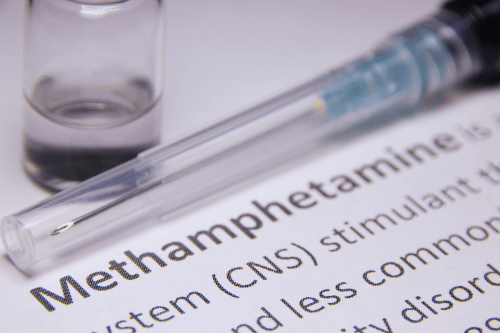

How Long Does Meth Stay In Your System: Detection Windows and What to Expect
The question “How long does meth stay in your system?” is one of the most searched topics by those who use methamphetamine or suspect someone close to them may be struggling. Crystal meth, a powerful stimulant, can remain detectable in the body for varying periods depending on the type of drug test used. Understanding detection times, physical effects, and treatment options can help guide those considering recovery through medical professionals or treatment centers like Sullivan Recovery in Orange County.
The life of meth in the body varies by the dose of meth taken, individual metabolism, and frequency of use. Chronic meth users may have longer detection windows due to the buildup of meth in fatty tissues. People with faster metabolisms may eliminate meth more quickly, while those with slower metabolisms retain it for a longer time frame.
Body temperature and physical activity can also influence how fast meth is processed. A higher metabolic rate may lead to a shorter detection window, while sedentary individuals may take longer to metabolize the drug. These factors make predicting exact detection times challenging.

Urine tests are a common method used to detect meth. For occasional users, the presence of meth can be identified for up to 3 days after use. Chronic users may test positive for an extended period—up to 7 days or more.
Urine drug testing is widely used in both clinical and legal settings due to its ease and affordability. At Sullivan Recovery, drug testing through urine tests helps monitor progress during meth addiction treatment programs.
Saliva tests detect meth in oral fluids within 10 minutes of use and can remain positive for up to 72 hours. They are less invasive and provide quick results.
These are commonly used in roadside screenings and workplace drug testing. Due to their short detection window, they are less effective for detecting long-term meth use.
Blood tests are highly accurate but have a shorter detection window. Meth can usually be detected in the blood within several hours of use and up to 1–3 days.
Because blood tests are invasive and require medical supervision, they are typically used in emergency or hospital settings. Sullivan Recovery coordinates with medical professionals when such tests are needed during detox or stabilization.
Hair follicle tests can detect meth use for an extended period—up to 90 days after the last use. This method is especially effective for identifying long-term meth use disorder.
Meth is deposited into hair follicles as the hair grows. Since hair tests offer a broad detection window, they are used in legal or forensic investigations more than clinical environments.

The short-term effects of meth can include intense rush, elevated heart rate, increased blood pressure, and raised body temperature. These physical symptoms often follow the initial rush, a sensation caused by rapid dopamine release in the brain. The effects of meth can impair judgment, cause irritability, and increase the likelihood of engaging in risky behaviors.
In many cases, these symptoms emerge quickly—sometimes within minutes—and may last for hours depending on the dose of meth and individual metabolism. Saliva tests and blood tests can confirm the presence of meth during this early detection window. The short-term high may fade fast, but drug tests can still detect meth through urine tests or other types of drug tests, even after the euphoria wears off.
Long-term use leads to dangerous outcomes such as meth mouth, severe weight loss, and tooth decay, especially in chronic users. Meth mouth is caused by dry mouth, poor hygiene, and extended periods of high sugar intake—symptoms tied directly to the effects of crystal meth on the body. Chronic meth users may also develop irregular heartbeat and experience lasting damage to cardiovascular health.
Sustained meth use increases the risk of developing mental health conditions, including anxiety, paranoia, and psychosis, often requiring dual diagnosis treatment. Meth use disorder can also lower motivation and concentration due to depleted levels of dopamine, creating a strong potential for addiction. Sullivan Recovery offers evidence-based treatment designed to manage both the physical symptoms and psychological toll of methamphetamine addiction. We combine medical professionals, hair follicle tests, and outpatient programs to provide support during each phase of the recovery journey.
Meth withdrawal symptoms may begin within 24 hours of last use and include fatigue, anxiety, and depression. These symptoms can persist for several weeks, especially in chronic meth users.
The detox process should take place under medical supervision, particularly when symptoms include hallucinations or suicidal thoughts. At Sullivan Recovery, our outpatient programs allow individuals to safely detox while still living at home, with daily support from trained clinicians.
Drug testing is essential for assessing current meth use and guiding treatment. The types of drug tests chosen—urine, blood, saliva, or hair follicle—depend on the detection time frame and specific needs of the client.
At Sullivan Recovery, drug tests are used to verify abstinence, monitor progress, and adjust treatment plans. Our admissions team works closely with clients to determine the best type of drug test based on their recovery goals.

Meth use impacts the entire body. Physical symptoms include increased blood pressure, irregular heartbeat, and heightened body temperature. These changes can be dangerous, especially in those with underlying health conditions.
Long-term use also affects levels of dopamine, which can lead to severe depression and a lack of motivation. Meth addiction can quickly take over a person’s life, damaging relationships, employment, and overall health.
Crystal meth, known for its crystalline form, is a powerful stimulant with a high potential for addiction. Even a single dose of meth can produce an intense rush that disrupts natural levels of dopamine and triggers a strong craving for repeated use. The short-term effects may feel pleasurable, but the physical effects and crash that follow often lead to compulsive behavior and rapid onset of meth use disorder.
As tolerance builds, chronic users increase their intake, which heightens the risk of addiction and worsens physical symptoms like weight loss, irregular heartbeat, and elevated blood pressure. Long-term use also impacts mental health conditions, contributing to paranoia, aggression, and severe mood swings.
Sullivan Recovery provides treatment for meth addiction through evidence-based outpatient programs designed to address both the psychological and physiological effects of meth. Our treatment centers offer support under medical supervision, combining drug tests such as urine tests and hair follicle tests with behavioral therapies to ensure lasting recovery from substance use disorders.
The detection window refers to how long a drug stays in the body and can be identified by testing. For meth, this varies based on the type of test and factors such as dose, frequency of use, and individual metabolism.
Knowing the detection window helps medical professionals determine when to initiate treatment and how to best support the client’s recovery journey. It also informs how long the individual may continue to test positive during early stages of detox.
Physical activity may slightly reduce detection times by increasing body temperature and speeding up metabolism. However, this effect is modest and doesn’t guarantee faster elimination of meth.
Those with faster metabolisms may clear meth more quickly, while those with slower metabolisms retain it longer. This reinforces why testing needs to be customized for each individual.
Meth use can worsen or trigger mental health conditions such as anxiety, depression, and psychosis. These symptoms often overlap with meth withdrawal symptoms, making diagnosis and treatment more complex.
At Sullivan Recovery, we treat substance use disorders and mental health together using integrated approaches backed by the Mental Health Services Administration. Addressing both issues improves long-term outcomes.

Treatment for meth addiction requires more than detox. Evidence-based treatment from qualified medical professionals includes behavioral therapy, medication management, and relapse prevention.
Sullivan Recovery in Mission Viejo offers outpatient treatment that helps people heal while staying connected to work and family. Our recovery journey includes personalized plans, peer support, and consistent monitoring through drug testing.
So, how long does meth stay in your system? The answer depends on many factors, including the type of drug test, the dose, and whether the individual is a chronic user. Urine tests detect meth for a few days, while hair tests may show use months later. Saliva and blood tests provide faster but shorter detection windows.
If you or someone you know is showing signs of meth addiction or meth withdrawal symptoms, now is the time to seek help. Sullivan Recovery provides outpatient support, medical supervision, and access to treatment professionals who specialize in addiction recovery.
Let our admissions team guide you or your loved one toward healing and long-term sobriety. Recovery from methamphetamine addiction is possible—with the right help.
National Institute on Drug Abuse – Long-Term Effects of Methamphetamine Use
Substance Abuse and Mental Health Services Administration – Drug Testing
Substance Abuse and Mental Health Services Administration – National Helpline
National Center for Biotechnology Information – Methamphetamine Toxicity
U.S. Drug Enforcement Administration – Methamphetamine Facts
Centers for Disease Control and Prevention – Methamphetamine
At Sullivan Recovery, as an in-network provider we work with most insurance plans, such as:
And More
If you or a loved one are struggling with mental health challenges or substance abuse, reach out to Sullivan Recovery today. Our team of compassionate professionals is here to support your journey towards lasting well-being. Give us a call at 949-836-7180.
While exposure to secondhand methamphetamine smoke is unlikely to cause a positive result on most drug tests, prolonged exposure in poorly ventilated areas may result in trace levels in the body. However, it typically wouldn’t reach the threshold required for a positive test result on standard urine tests or saliva tests.
Hydration and physical activity may support overall kidney function and metabolism, but they do not significantly speed up the elimination of meth from the system. Meth’s presence in the body is primarily affected by the individual’s metabolic rate and the dose of meth consumed, not short-term detox methods.
Yes, methamphetamine can pass into breast milk and may be harmful to a nursing infant. Medical professionals strongly advise against breastfeeding while using meth, as even small amounts can lead to health risks for the baby, including agitation, poor feeding, and developmental concerns.
Some over-the-counter or prescription medications, such as certain decongestants and ADHD medications, may cause false positives on methamphetamine drug tests. If a test is positive, labs often conduct confirmatory testing using more advanced methods like GC-MS to rule out false results.